5.760 GHz station
5.760GHz station
The kernel in this station setup is from an Ericsson Minilink 13. Reused parts are: the dish, eqipment housing, cooling fin and mounting brackets. All original RF parts have been ripped out and thrown in the junkbox for possible future projects. Other scavanged parts are, a DC/DC converter from NEC, 7.2GHz power FET amplifer from NEC, another DC/DC converter from Ericsson
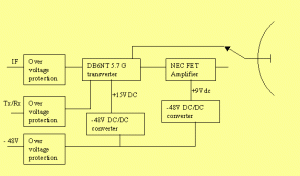
The basic trasverer is from DB6NT. It delivers 200 mW of output power. The RX has a NF of around 1 dB.
A power amplifier is added to boost the output to 10W. Originally, this amplifier operated on 7.2GHz with an output of 2W. As can be seen in the picture, the FET stages are retuned down to 5.7GHz. As usual in ham applications, we want to squeeze the maximum out of the final stage. In this amplifier, a solid 10W of output power could be obtained. The sacrifice is linearity.
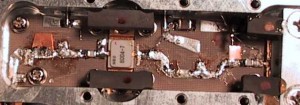
In the retuning, not only the striplines are tuned, but also the 1/4 lambda lines that supply the FET with bias and source voltage.
As the whole remote unit will need around 8A at +12V DC, a build in DC/DC converter is used. This converter use an input voltage of -48V DC. Thus, the current consumption is reduced to 2A on the -48V side. In addition, the DC/DC converter has a wide range of input voltage, from approx. -20V DC to -70V DC. This wide range makes the unit insenitive to voltage drop that inevitably will occure along the power feed cable.
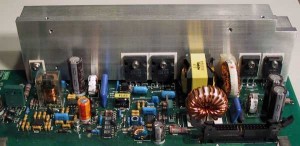
The DB6NT transverter require +15V DC. This supply voltage is obtained from another surplus DC/DC converter. It is able to supply 1A of current. The -15V and +15 volt are added in series in floating mode to key the antenna coax relay.
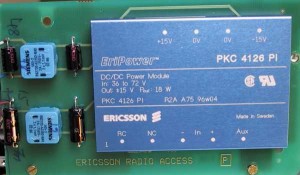
The 60cm dish antenna is illuminated with a feedhorn.The original 13GHz wave guide hook is reused support and hold the feed horn. A low loss teflon coax is run inside the wave guide to connect the horn with the tx/rx relay.
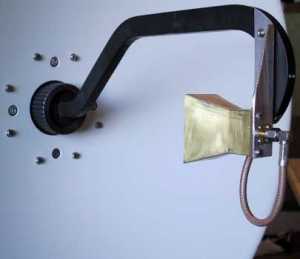
The complete 5.7GHz unit is placed outdoors in the original minilink housing that in turn is mounted on a rotor.
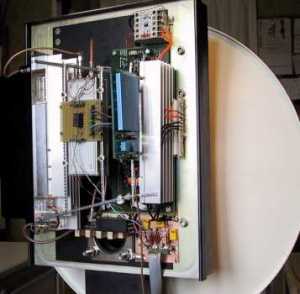
The transverter was assembled by Per, SM0DFP in November 2000.
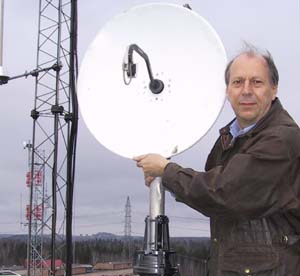
Already some week after the instalation, SM7ECM was worked on tropo.